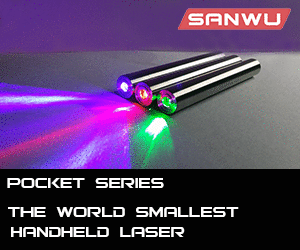- Joined
- Oct 6, 2015
- Messages
- 1,522
- Points
- 113

Follow along with the video below to see how to install our site as a web app on your home screen.
Note: This feature may not be available in some browsers.



How much I need a yellow
There should be no confusion. There are only two wavelengths in reality. 589nm and 593.5nm. 593.5nm (594nm) is noticeably more orange in colour vs 589nm. Both are SFG (Sum Frequency Generation) DPSS lasers.I get confused on these yellows 589 591 593 594. Without seeing or measuring I don’t think you can really know from a picture. Still pretty good color.
Temperature tuning won't work with these SFG's unfortunately. It's because the mechanism still relies on a double crystal setup. One solid state medium and then the harmonic medium. This means the lasing crystal is the regulator. It only is going to produce wavelengths according to its emission lines. Temperature can affect semiconductors in this way, but this actually has a negative affect on DPSS lasers. Because the solid state crystal is after a narrow absorption band so the diode shifting can reduce the efficiency. DPSS lasers can be used alongside gas lasers to calibrate spectrometers because of their non wavelength shifting exact lines. There are new types of solid state lasers called SFD (Self Frequency Doubling) lasers. These are single crystal setups that as the name suggests they self double themselves without the need for a harmonic crystal. Another more unusual feature of these are their emission lines aren't as narrow. In fact they can have bands which are most likely tuned by optics rather than thermal tuning. Again, once these lase a wavelength, I have not noticed wavelength shift under different operating temperatures. Probably because they rely on the same diode pumping mechanism as other DPSS's by definition. Examples of these SFD DPSS lasers are the mysterious cheap 565/575's that popped up years ago. And now the cheap 555-561nm, and 571-574nm modules that exist now. Which answers your question marked laser in your signature.That was helpful thank you. I wonder if the transitions are that tight or if you can temp tune the sum difference frequencies. I have tried sum difference only once and it failed.

